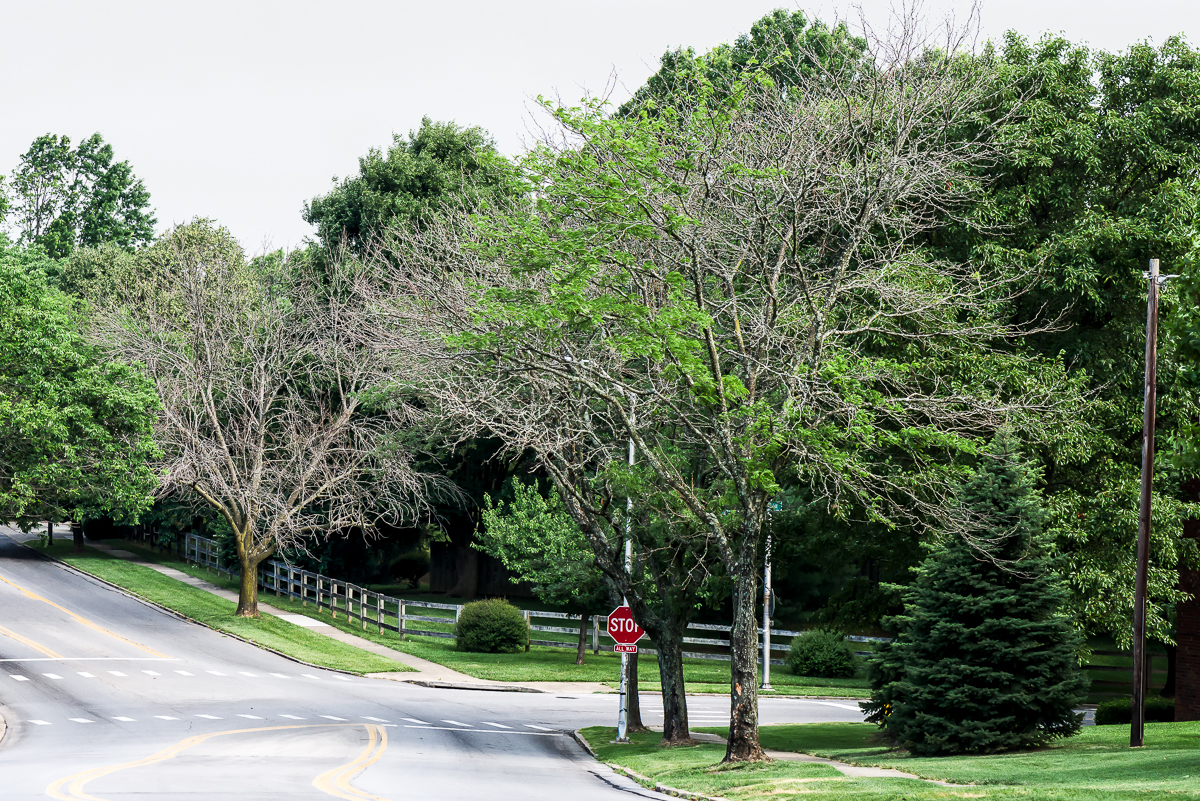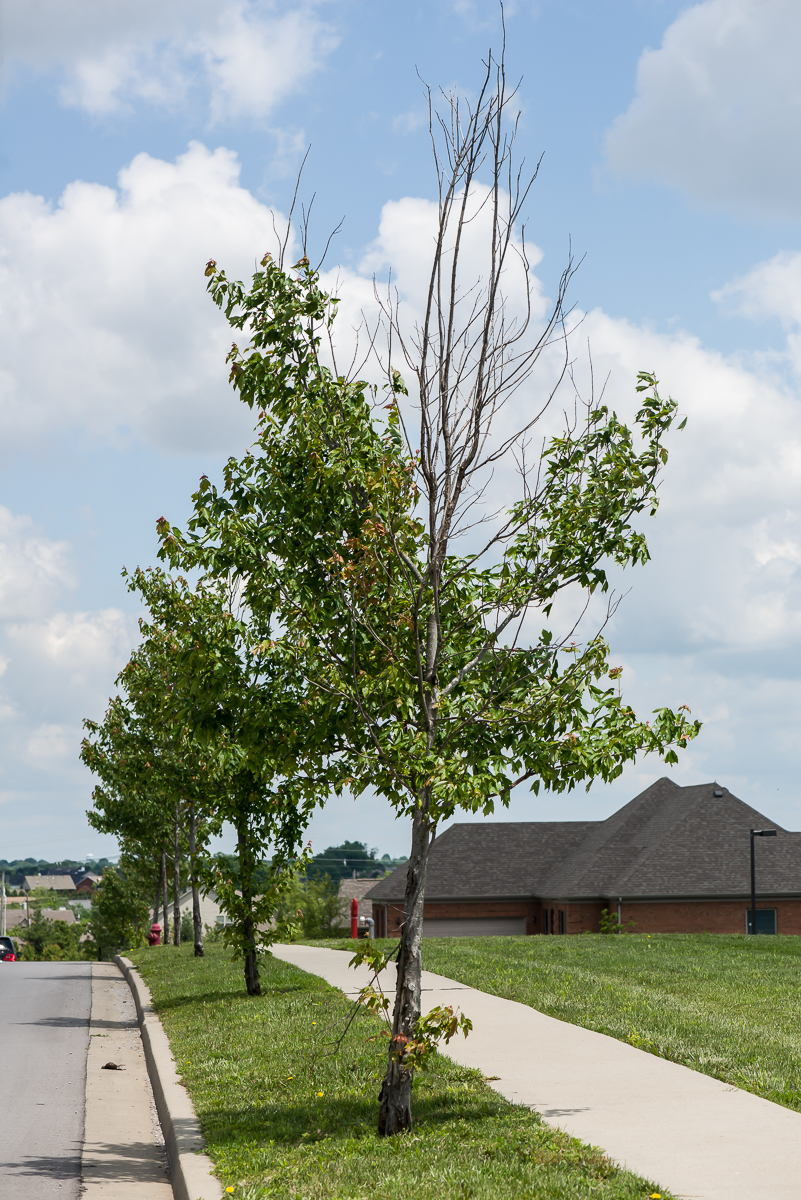It is that time of year when our urban forest seems to be lush, vibrant, and green. Trees have finished leafing out, many have flowered and, with recent heavy rains, many are growing well. To the casual observer, the urban forest looks like it is thriving. People are planting trees all over town and nurseries are doing a brisk business. I am talking here about Lexington, Kentucky, but you could probably say this about any city in the rainy eastern US and Canada.
But all is not well. A stroll down any street shows numerous trees in dire condition. The first photo shows a street near my office. Ash trees along the street have not been treated and are dying from emerald ash borer infestation. At least 11% of the trees in the city are likely to succumb over the next few years. The honeylocust trees are declining due to the fungus Ganoderma lucidum, which decays roots and lower stems of many trees. Honeylocust is especially susceptible.
Ash and honeylocust trees are widely planted in urban areas. They grow well, require relatively little maintenance and tolerate a wide range of urban stresses. These two tree species are among the most abundant in our urban forest. Yet they are disappearing rapidly and will leave great holes in our urban canopy. We have repeated the common mistake of the past - overplanting of individual species that do well for a time, and then succumb to a new insect or disease.
The loss of ash and honeylocust might be acceptable if other trees were doing well, but they are not. Young street trees, regardless of species, have very high rates of mortality. Typically, especially in developments, poor quality nursery stock is planted in poor soil. These trees have little chance of survival. They represent a significant waste of money. Trees have enormous economic and environmental benefits, but only if they live a reasonably long time. When the majority of newly planted trees die within a few years of planting, they have negative value - the planting costs are not recouped by environmental benefits.
The most valuable trees in a city are the largest. These provide the most shade, store a lot of carbon, cool the city and provide psychological benefits. Yet even here, we are losing. Old trees are not receiving adequate care and are being lost to development, mower damage, soil compaction and lightning damage.
As much as we enjoy the beauty of our urban forest, especially on hot summer days, we need to recognize that most of us live in cities where the health and value of the urban forest are declining. There are solutions, but they require substantial changes in how we manage trees. We place great emphasis on tree planting but very little on tree health and maintenance. Planting smaller trees, creating better soil conditions, and spending part of our tree budget on maintenance will extend the lives of our trees.
The loss of so many trees over a short period of time is a tragedy, but it is also an opportunity for us to rethink how we plan, plant and maintain our urban forest.


